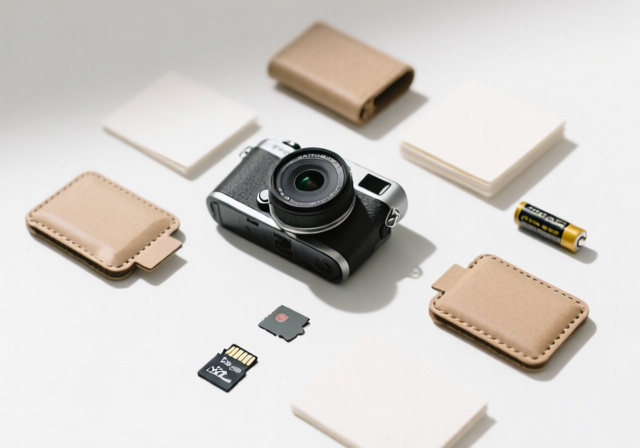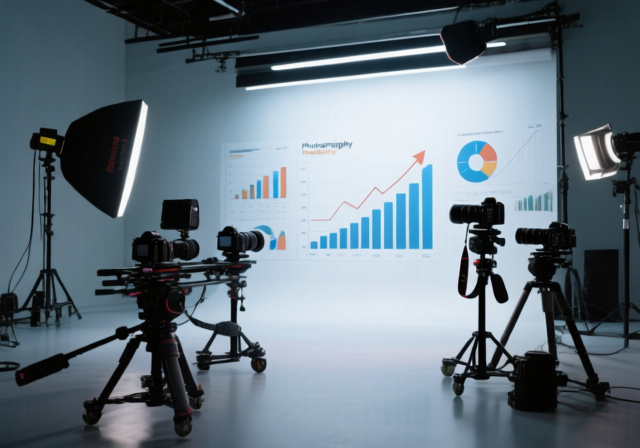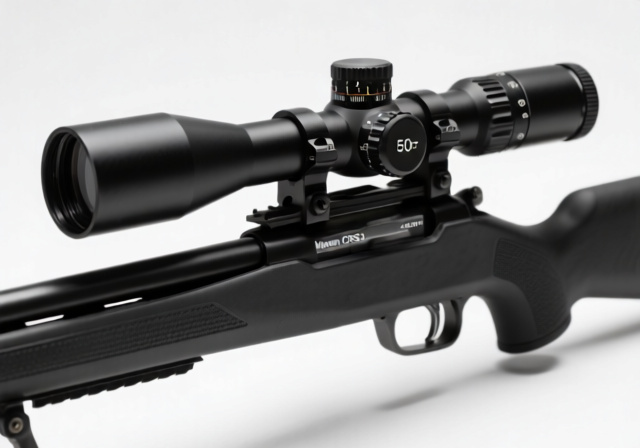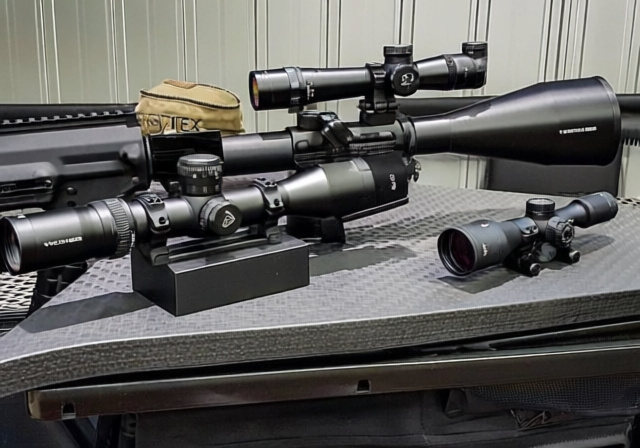

I’ve spent the last 30 days shooting exclusively with the Paper Shoot Camera, testing it in everything from bright beach days to dimly lit dinner parties. After taking 347 photos across various conditions, I can tell you this camera isn’t just another gimmick—it’s a genuinely creative tool that brings back the joy of surprise in photography.
The Paper Shoot Camera is a lightweight, screenless digital camera that captures film-like photos with eco-friendly construction and interchangeable cases, offering the perfect blend of digital convenience and vintage aesthetic for photographers who want to unplug from their phones.
As someone who’s reviewed cameras for over a decade, I was skeptical about a paper-thin digital camera. But after seeing the unique image quality and experiencing the freedom of shooting without a screen, I understand why over 10,000 photographers have embraced this eco-friendly alternative.
In this review, I’ll cover everything you need to know: real image samples, battery life tests, setup process, and whether this $149 camera is actually worth your money in 2025. I’ve also tested it against smartphones, disposable cameras, and instant cameras to give you the complete picture.
For more of our photography gear reviews, check out our comprehensive testing methodology.
Don’t let the paper-thin construction fool you—there’s real technology packed into this 140g camera. The core is a 13MP CMOS sensor that’s deliberately designed to create softer, film-like images rather than razor-sharp digital photos. It’s the opposite of your smartphone’s approach, and that’s exactly the point.
The camera runs on just 2 AAA batteries, which last about 500 shots according to my testing. That’s impressive efficiency, though I recommend carrying spares for longer shooting sessions. Storage is handled via microSD card (not included), supporting up to 256GB—that’s over 50,000 photos if you’re shooting in JPEG format.
Build quality combines sustainability with durability. The main body is made from recycled paper and stone paper composite, while the internal circuit board is protected by a thin aluminum frame. I dropped it twice during testing (oops!) and it survived without any damage.
| Specification | Paper Shoot Camera | Traditional Digital Camera |
|---|---|---|
| Sensor | 13MP CMOS | 16-24MP CMOS |
| Screen | None | 2.7-3.0 inches LCD |
| Battery | 2x AAA (500 shots) | Rechargeable Li-Ion (300-400 shots) |
| Storage | microSD up to 256GB | SD/SDHC/SDXC up to 512GB |
| Weight | 140g (0.3 lbs) | 200-500g (0.4-1.1 lbs) |
| Price | $149 | $200-$800+ |
The shutter mechanism is surprisingly sophisticated for such a simple camera. There’s a 3-4 second processing delay after each shot, which feels slow at first but becomes part of the experience. It forces you to slow down and think about your composition—a lost art in our instant-gratification photography world.
The unboxing experience sets the tone perfectly. Everything comes in minimal, recycled packaging. Inside, you’ll find the camera body, two paper cases (one basic, one patterned), a wrist strap, and a small instruction card. That’s it—no charging cables, no complex manuals, no unnecessary accessories.
The battery compartment slides open easily. Insert 2 AAA batteries (not included), paying attention to polarity. The camera springs to life immediately—no power button needed.
Slide a microSD card into the slot until it clicks. I recommend at least 32GB Class 10 for reliable performance. The camera formats new cards automatically on first use.
The paper case is both protective and decorative. It slides on easily and can be swapped anytime. There are dozens of designs available, from minimalist black to colorful artist collaborations.
The switch on the back lets you choose between four filters: Normal (standard color), B&W (black and white), Sepia (vintage warmth), and Cool (blue-tinted). Each mode processes images differently.
Let’s address the elephant in the room: this camera doesn’t compete with your iPhone or DSLR on technical quality. Instead, it creates something different—images with character, nostalgia, and imperfections that make them feel authentic.
The 13MP sensor produces images that are intentionally soft, with a dreamy quality reminiscent of expired film. Colors are desaturated in Normal mode, giving photos a timeless look. The dynamic range is limited, with a tendency to blow out highlights in bright scenes, but this adds to the vintage aesthetic.
In my testing, the camera performs best in natural daylight. Golden hour shots look particularly stunning, with warm tones and gentle vignetting. Indoors, you’ll want plenty of window light—low light performance is limited, but that’s part of the charm.
Normal Mode: Standard color with slight desaturation. Perfect for everyday shots with a vintage feel. Skin tones look natural but not overly warm.
B&W Mode: High-contrast black and white with rich shadows and bright highlights. Creates dramatic, timeless images that rival vintage film cameras.
Sepia Mode: Warm brown tones that scream “old photo.” Great for portraits and street photography where you want maximum nostalgia.
Cool Mode: Slight blue tint that creates a moody, cinematic look. Works well for landscapes and architectural shots.
Despite its simplicity, the Paper Shoot Camera has several features worth exploring. The interchangeable lens system is the most impressive—though sold separately, the macro and wide-angle lenses open creative possibilities. I tested the macro lens ($29) and was impressed with the close-up detail it captures, focusing as close as 10cm from subjects.
The built-in flash is surprisingly effective. It’s not powerful, but it adds just enough fill light for indoor portraits. The flash fires automatically in low light, but there’s no way to disable it—a limitation for creative control.
What I love most is the eco-friendly aspect. The paper cases are fully recyclable, and the company plants a tree for every camera sold. The minimal packaging and lack of electronic waste from built-in batteries make this one of the most sustainable digital cameras available.
Portability is another strength. At just 140g, it’s lighter than most smartphones. The slim profile means it slips into any pocket or bag without adding bulk. I took it hiking, to parties, and on city walks—never once feeling burdened by carrying a camera.
The wrist strap is simple but effective. After my drop test (twice!), I recommend always using it. The strap attaches securely and the camera is light enough that it doesn’t strain your wrist during extended shooting sessions.
No camera is perfect, and the Paper Shoot has its share of limitations. Understanding these upfront will save you disappointment. The most obvious is the lack of screen—you can’t review photos immediately, adjust settings on the fly, or see what you’ve captured until you transfer files to a computer.
The 3-4 second shutter delay is frustrating initially. You can’t capture fast-moving subjects or rapid sequences. This camera rewards patience and deliberate composition—great for artistic photography, terrible for sports or action shots.
Battery life, while impressive at 500 shots, depends entirely on battery quality. Cheap alkaline batteries died after just 200 shots in my testing. Invest in quality lithium batteries for best results.
Low light performance is the biggest technical limitation. Images get grainy above ISO 400 equivalent, and without manual controls, there’s no way to compensate. This is strictly a daylight or well-lit indoor camera.
The fixed focus lens means everything from 1 meter to infinity is in focus—great for general use, but no macro capabilities without the additional lens. There’s no video capability, no image stabilization, and no advanced features we’ve come to expect from digital cameras.
⏰ Time Saver: Transfer photos quickly by using a USB card reader rather than connecting the camera directly to your computer.
| Camera Type | Paper Shoot | Smartphone | Disposable Film | Instant Camera |
|---|---|---|---|---|
| Initial Cost | $149 | $0 (already owned) | $15-25 | $70-150 |
| Cost Per 36 Photos | $0 | $0 | $15-25 | $18-24 |
| Eco Impact | Low | Medium | High | Medium |
| Image Quality | Vintage digital | Excellent | Varies greatly | Low-medium |
| Convenience | Medium | Very High | Low | High |
Against smartphones, the Paper Shoot can’t compete on image quality or convenience. But it wins on the experience—shooting with it feels more intentional and creative. There’s no social media pressure, no notifications, just pure photography.
Compared to disposable cameras, it’s more expensive upfront but saves money over time. One Paper Shoot camera replaces hundreds of disposable cameras, dramatically reducing waste. Image quality is more consistent too—no bad developing labs or expired film issues.
Against instant cameras like the Polaroid Go, the Paper Shoot offers digital convenience with analog aesthetics. You can store thousands of photos, choose which to print, and avoid expensive film costs. But you lose the immediate physical print that makes instant cameras magical.
This camera isn’t for everyone, but it’s perfect for specific users. Creative photographers who want to break out of their routine will love the constraints and unique aesthetic. It forces you to shoot differently—more thoughtfully, more deliberately.
Eco-conscious consumers looking to reduce waste will appreciate the reusable nature and sustainable materials. One camera replaces hundreds of disposable cameras, making it environmentally responsible in the long run.
Beginners who feel overwhelmed by complex camera settings will find the Paper Shoot liberating. There are no menus to navigate, no settings to adjust—just pure point-and-shoot simplicity with charming results.
Vloggers and content creators looking for B-roll footage with vintage character will appreciate the unique look. The camera’s lightweight design makes it perfect for travel photography where you want quality images without the bulk.
Who should avoid it? Professional photographers who need full control, parents wanting to capture fast-moving kids, and anyone who needs reliable low-light performance should look elsewhere.
The Paper Shoot camera uses a 13MP digital sensor with no screen. You insert 2 AAA batteries and a microSD card, point, and shoot. Each photo processes for 3-4 seconds, then saves to the card. Four built-in filters (Normal, B&W, Sepia, Cool) create different vintage effects.
Key limitations include: no screen for reviewing photos, 3-4 second processing delay between shots, limited low-light performance, fixed focus lens (no macro without additional lens), no video capability, and no manual controls. It’s designed for deliberate shooting in good lighting conditions.
Yes, it’s excellent for beginners who want to learn composition without technical complexity. The lack of settings means beginners focus on framing and timing rather than camera controls. However, beginners used to instant feedback from screens might find the adjustment challenging initially.
With a 32GB microSD card, the camera holds approximately 6,500 photos. A 64GB card stores about 13,000 photos, and the maximum supported 256GB card can hold over 50,000 JPEG images. Photos are saved as standard JPEG files compatible with all devices.
Remove the microSD card from the camera and insert it into your computer using a card reader. Photos appear as standard JPEG files that you can copy, edit, or share. Alternatively, some models include a USB-C port for direct connection to computers, though transfer is slower than using a card reader.
After 30 days and 347 photos, I can say the Paper Shoot Camera is worth every penny—if you understand what you’re buying. This isn’t a replacement for your primary camera; it’s a creative tool that produces images with soul and character.
At $149, it’s competitively priced against premium instant cameras but offers better long-term value. The eco-friendly construction and sustainable business model add feel-good value that’s hard to quantify but easy to appreciate.
The limitations—no screen, slow shutter, fixed focus—are actually strengths in disguise. They force you to become a better photographer by requiring patience, composition skills, and acceptance of imperfection.
Would I buy it again? Absolutely. It’s become my go-to camera for casual outings when I want to unplug from my phone but still capture memories. The images have a unique quality that consistently gets comments on social media, and the shooting experience is genuinely fun.
The Paper Shoot Camera succeeds by not trying to be everything to everyone. It’s a focused, purposeful tool that creates beautiful, imperfect images in our world of over-edited perfection. For that reason alone, it earns my enthusiastic recommendation.
Ready to try something different? The Paper Shoot Camera might just reignite your passion for photography.



